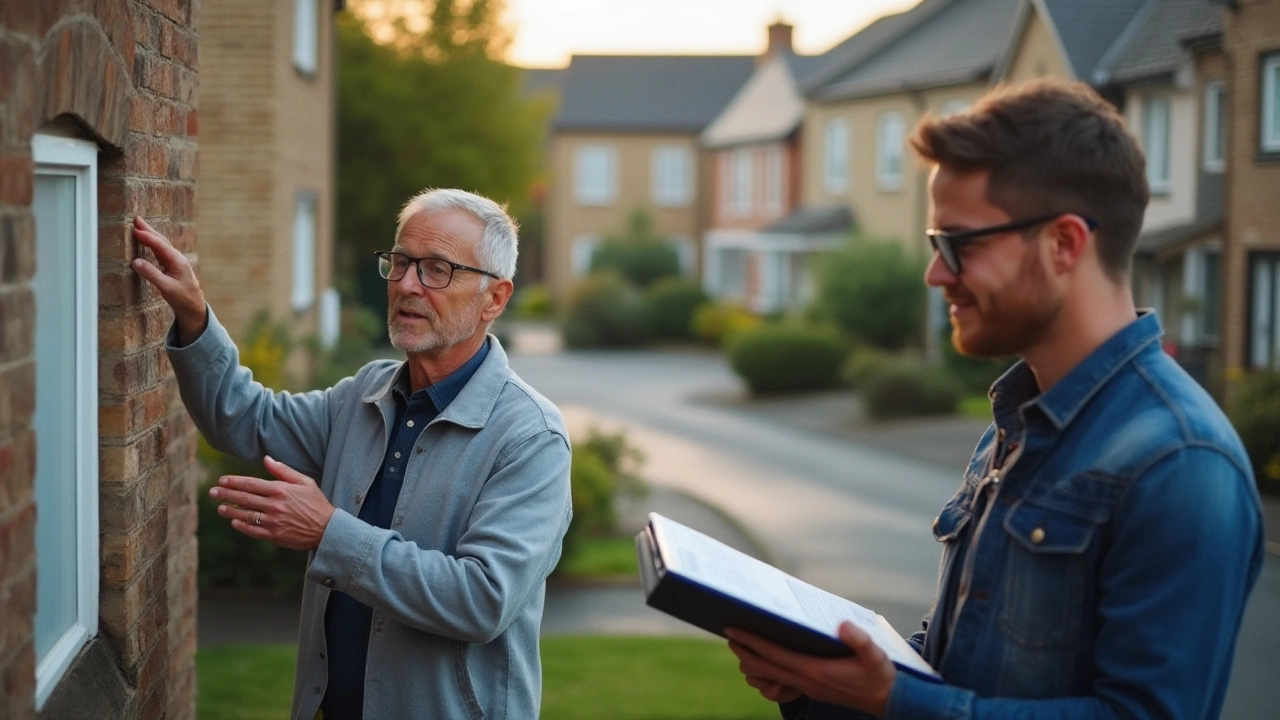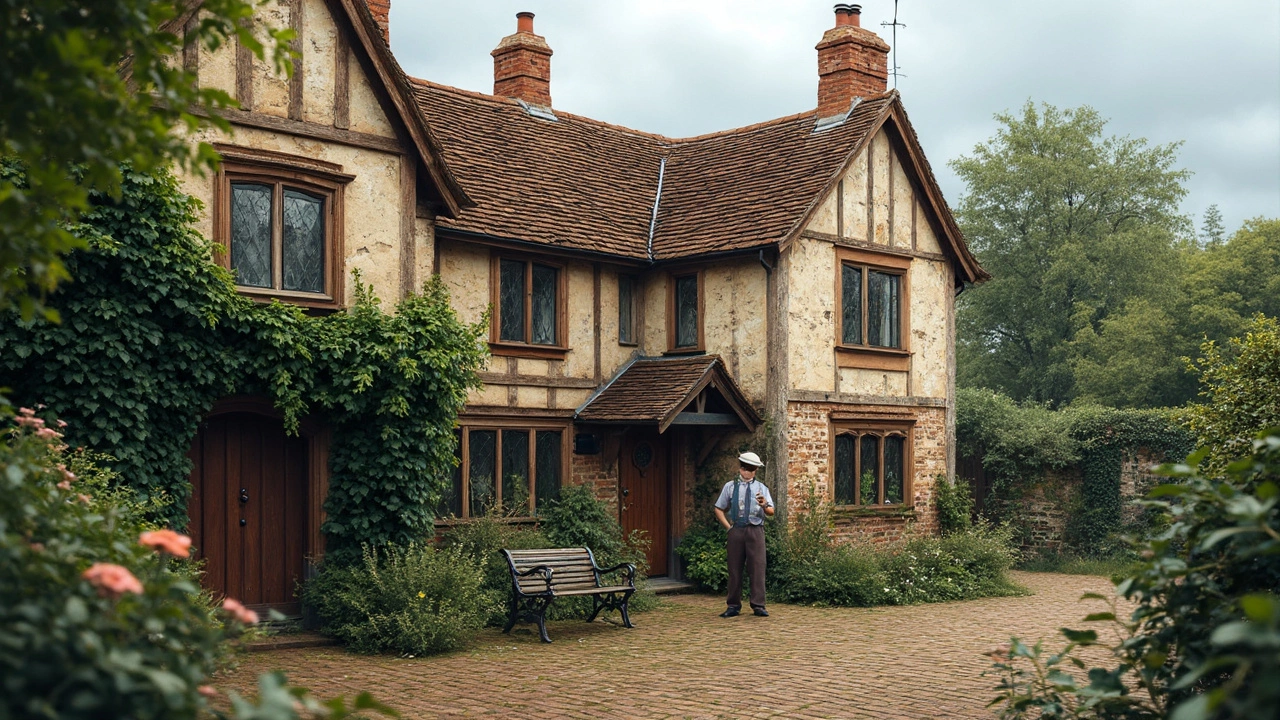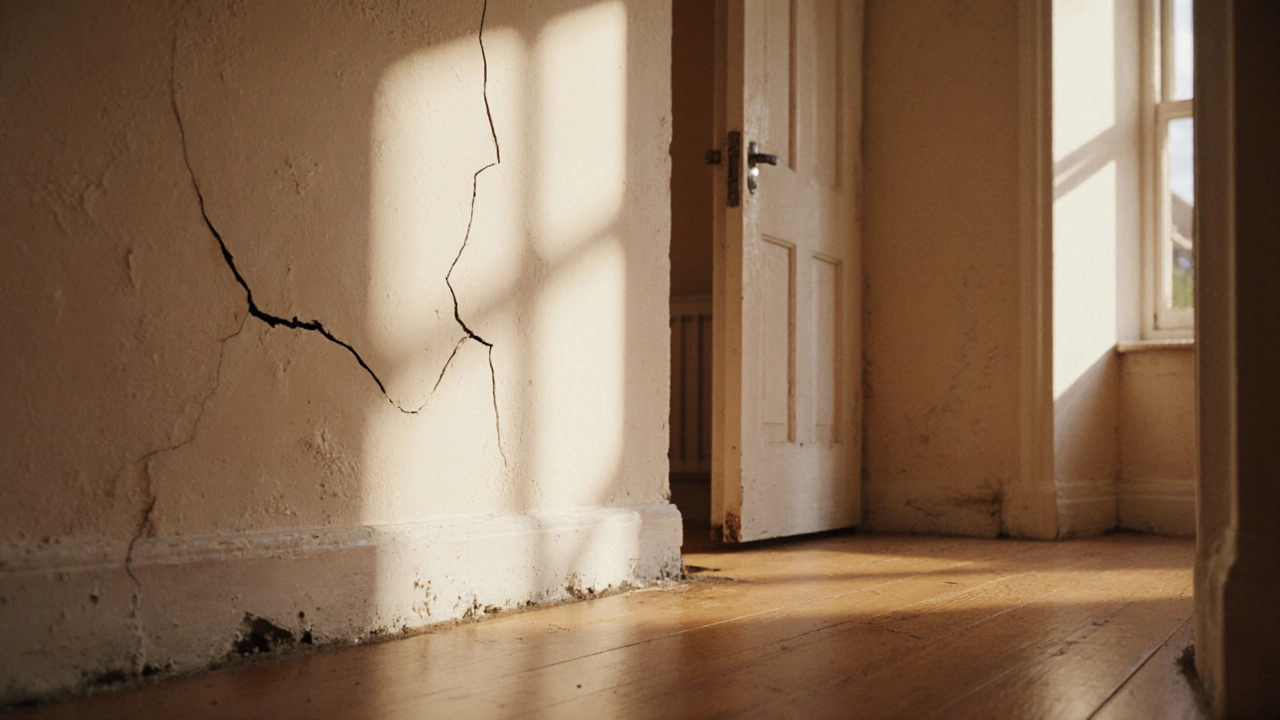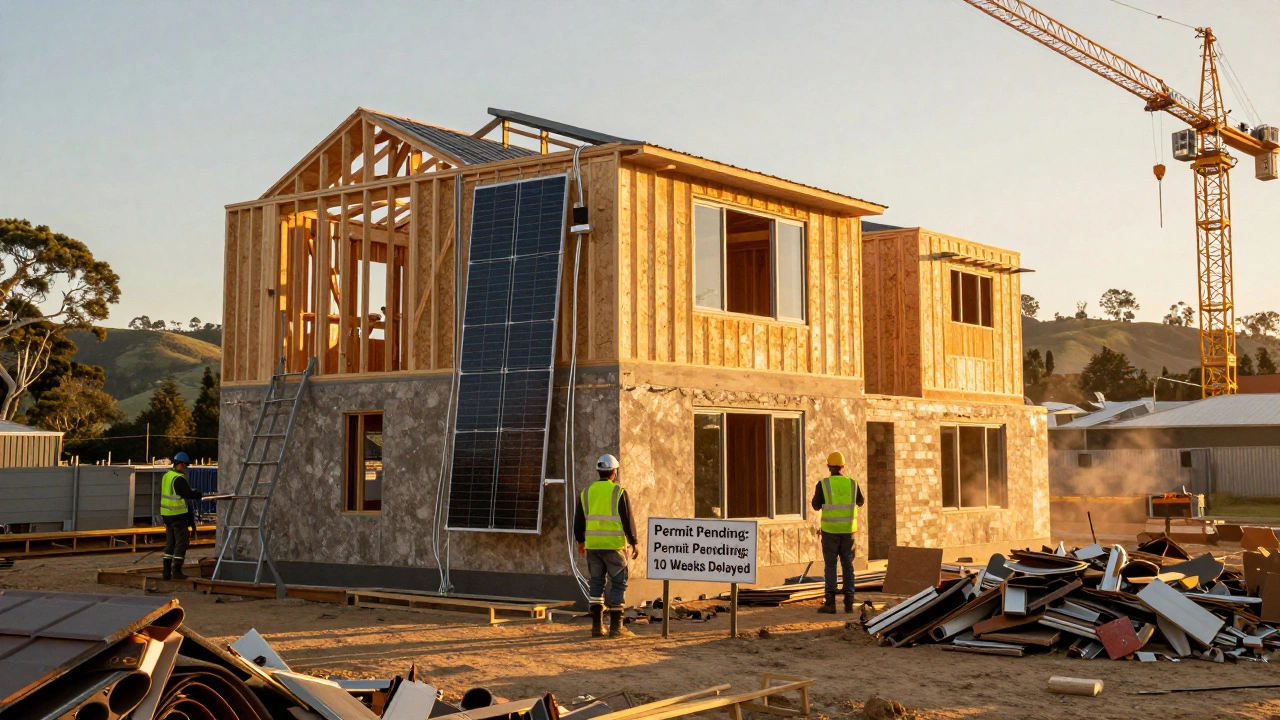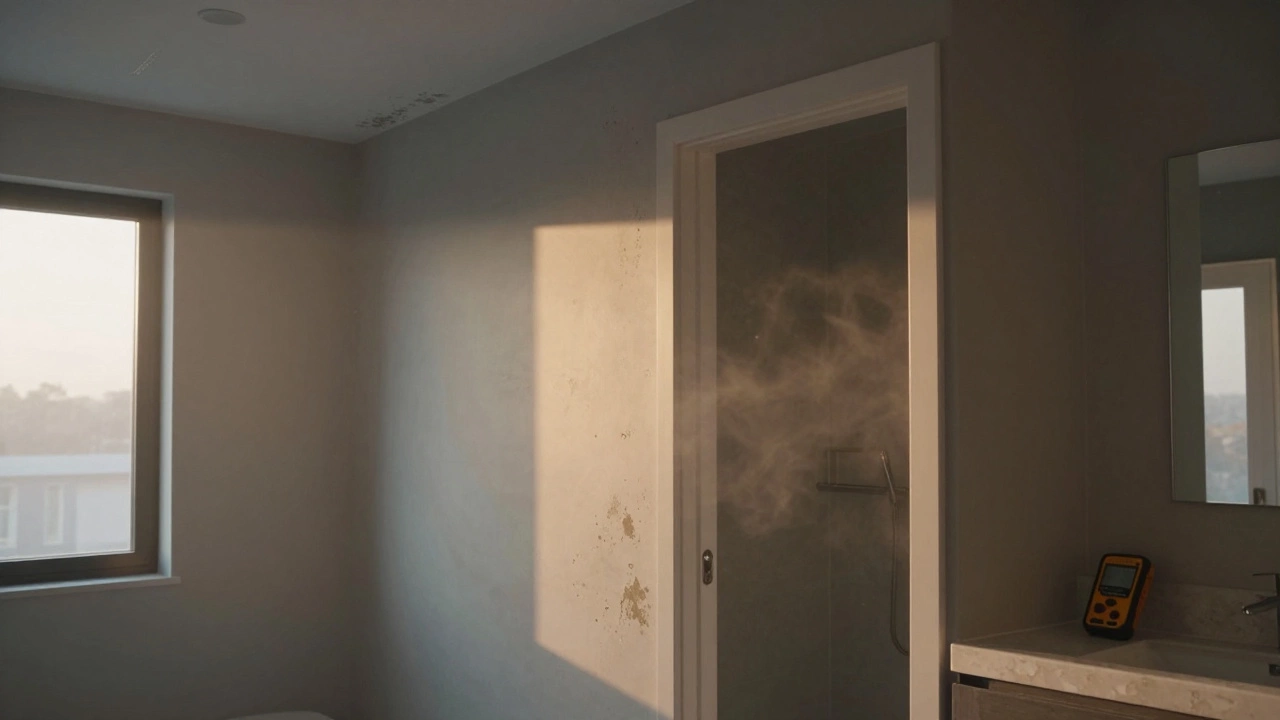Foundation repair is something that many homeowners don't think about until it's too late. Yet, understanding how your home's base can affect everything above it is crucial. From small cracks to significant shifts, knowing what to look for and the best way to address it could save not just headaches, but also your hard-earned money.
In this piece, I'll walk you through the world of foundation repairs, touching upon the tell-tale signs of trouble and the best ways to fix them. We'll delve into various methods, weighing their pros and cons, and help you make sense of it all, whether you're a DIY enthusiast or a big believer in calling the experts. Home ownership is full of surprises, but your foundation's stability shouldn't be one. Let's get digging!
- Understanding Foundation Problems
- Signs You Need Foundation Repair
- Popular Foundation Repair Methods
- Evaluating Cost and Longevity
- DIY vs. Professional Repair
- Choosing the Right Contractor
Understanding Foundation Problems
When it comes to your home, the foundation is undeniably one of the most crucial components. Without a stable base, everything from your walls to your roof may eventually suffer. Foundation problems can manifest in numerous ways, some more subtle than others, and understanding these issues can preempt more significant and costly damage. One common sign of foundation issues includes noticeable cracks in the walls and floors. These are often the early signs and can gradually worsen if left unaddressed. It's not just the sight of cracks that should be cause for concern; it's their progression and what they signify beneath the surface.
Water is another major culprit when it comes to foundation damage. Poor drainage around the home can lead to an accumulation of water, which in turn might cause soil to expand and contract. This repetitive cycle leads to the ground shifting, unsettling the home foundation. Another aspect tied to water issues is improper grading, where the land around the house slopes inwards, directing water towards the foundation rather than away from it. This situation often exacerbates the pressure on the walls and floors, further leading to misalignments and cracks.
Temperature changes can also influence foundation stability. In regions prone to drastic weather variations, like hot summers followed by freezing winters, the soil can expand and contract dramatically. This natural phenomenon plays havoc with the structural integrity of properties. In certain areas laced with clay soil, these effects are even more pronounced. Given these contributing factors, it becomes essential to have a well-planned foundation suitable for the local climate and soil conditions right from the onset during construction.
"The strength of any building is in its foundation. Knowing the terrain and planning accordingly is half the battle," notes construction expert Mark Breaker.
The consequences of a faulty foundation aren't restricted to structural anomalies alone. Doors and windows might begin to jam, not fitting into their frames as they once did. You might even notice uneven floors, which can be both an eyesore and a trip hazard. Furthermore, chimneys may start leaning, presenting a more visible red flag that demands immediate attention. Typically, these symptoms don't occur simultaneously but escalate over time, highlighting the underlying issue progressively.
To get to the root of the problem, periodic inspections can be invaluable. Evaluating the immediate environment around your home, from the landscaping to drainage systems, plays an essential role. Checking for any unusual shifts or sags after severe weather conditions is prudent. If there are any suspicions about possible damages, seeking an assessment from a foundation specialist is crucial. They bring a level of expertise and can offer insights that aren't apparent to the untrained eye.
Understanding the common problems that plague foundations gives homeowners the power to take control. Whether through preventive measures or recognizing tell-tale signs early, proactive management can save a significant amount of trouble and expense down the line. After all, dodging a bullet of possible high repair costs is not just about immediate fixes but importantly about ensuring lasting solutions.
Signs You Need Foundation Repair
Foundation issues often start out subtly but can escalate into significant problems if left unchecked. Recognizing these foundation issues early can make a huge difference in the cost and complexity of repairs. One of the most common signs to watch for is the appearance of cracks. These cracks can show up in various places such as brickwork, drywall, or even on the slab itself. Not all cracks mean disaster, but those that zig-zag or appear wider than a quarter of an inch should certainly raise an eyebrow. If cracks seem to consistently grow longer or wider, it's time to consider getting a professional opinion.
Another tell-tale sign of potential foundation repair needs is persistent door and window alignment problems. If you're constantly wrestling with doors that won't latch or windows that are suddenly jammed shut, your home's foundation might be shifting beneath you. When frames become misaligned, they can signal foundation movement which disrupts the structural balance of your house. Occasionally, you might even notice sloping floors or gaps under baseboards that weren't present before.
Beyond cracks and misalignments, you might notice separation between the ceiling and the walls, or between walls themselves. This kind of separation might not be immediately obvious until art frames or mirrors hang crooked, despite every effort to straighten them. Similarly, separations or gaps around cabinetry can hint at foundation movement, potentially requiring serious attention.
It's also wise to keep an eye out for moisture-related issues such as flooding in the basement, damp carpets, or visible water seepage in the walls. These can indicate improper drainage around your home, which often leads to foundational wear and tear. The same can be said for mold growth or unusual smells that give away unnoticed water leaks.
If you really want to understand just how seriously these signs should be taken, listen to what structural engineers often emphasize: a drop of even an inch can signify substantial foundation settling problems. According to the National Association of Home Builders, even a small shift in the soil can influence structural integrity, stating, "The performance of your home depends greatly on what's beneath it."
Lastly, a sagging roof or visibly leaning chimneys are more dramatic signs that suggest you shouldn't delay investigating foundation integrity. These can be costly to repair if left unattended and may even pose a safety risk if not evaluated promptly. Taking heed of these warnings is essential for maintaining the health of your home, and acting sooner rather than later is always the best approach.

Popular Foundation Repair Methods
When it comes to foundation repair, the industry offers a variety of methods tailored to address different problems that homes face. One leading technique is slab jacking, a method often employed to raise sunken concrete slabs. This involves pumping a grout mixture through small holes drilled into the slab, lifting it back to its original position. It's a bit like watching a concrete magician at work, transforming what appears to be a permanent flaw into a seamless fix. This method is particularly valued for its relatively quick execution and minimal disruption to the property.
Another widely recognized method is piering, sometimes known as underpinning. This technique is used to correct shifts in a home's foundation by driving steel piers deep into the ground beneath the house to stabilize it. Piering offers a permanent solution, reinforcing the structural integrity by reaching bedrock or a sturdy soil layer. Although it's usually more expensive than slab jacking, the reassurance it offers in stabilizing large foundational shifts is unmatched. One engineer described it as 'bridge building for homes', showcasing its intensity and durability.
"Homeowners often underestimate the significance of a solid foundation until they face the consequences of neglect. Proper repair solutions like piering can substantially enhance a home's resale value," notes Karl Finley, a veteran structural engineer.
There's also the ever-popular method of helical piers, similar to traditional piering but with a twist—literally. Helical piers are like giant screws that bore into the earth, used both for small and large repairs. They're advantageous due to their adaptability, capable of being installed in tight or awkward spaces with minimal excavation required. Envision the helix form coiling down, reaching deep to find stability, and suddenly a seemingly overwhelming problem becomes manageable.
For homes afflicted by smaller issues, polyurethane foam injection could be the best option. This method involves injecting high-density polyurethane foam beneath a surface. As the foam expands, it fills voids and lifts the concrete slab into the desired position. It's a modern fix, quick and often more affordable, with a precision focus that leaves less room for error. It's like pouring thick cream into your morning coffee, watching it rise and blend seamlessly yet robustly. This method has become increasingly popular due to being environmentally friendly while offering precise control during installation.
Each method has its unique strengths and applicability, dictated by the specific issues a foundation might face. It's crucial for homeowners to identify their particular needs with professional assessments before committing to a solution. Knowledge-seeking homeowners often find these methods a game-changer, bridging the gap between feeling helpless and taking decisive, impactful actions. Choosing the right repair can not only preserve your home but also enhance its long-term value, making it as much a financial decision as a structural one.
Evaluating Cost and Longevity
When contemplating foundation repair for your home, two critical factors come into play: the cost of the repair itself and the long-term durability of the solution. Understanding these elements helps homeowners make informed decisions when faced with foundation issues. The costs associated with foundation repair can vary dramatically based on the severity of the problem, the chosen repair method, and the geographical area where you live. Less invasive techniques, such as slab jacking, may be more budget-friendly but might not offer the permanence needed for extensive damage. On the other hand, methods like piering can be pricier initially but offer significant long-term benefits, especially in structurally compromised cases. Some homeowners are so daunted by upfront costs that they delay repairs, a strategy that, paradoxically, often leads to even higher expenses as problems worsen.
For those pondering the longevity of repair solutions, it's crucial to understand the root causes of your specific foundation issues. Some homes are built on problematic soil, where ground movements inevitably happen over time. In these cases, opting for a more robust solution, even at a higher price point, typically pays off by preventing recurrent problems. According to experts from the International Association of Certified Home Inspectors, "Repaired foundations should be structurally sound for decades to come provided that no unusual stress is placed upon them."
"The key is to match the method with the underlying issue – a misalignment can mean returning to square one within a few short years," advises renowned structural engineer Mike Holmes.While the price of repairs might steer decisions, it's the longevity that brings true peace of mind. Wise homeowners consider their homes as the long-term investment they are, focusing less on the initial outlay and more on the future they’re securing for themselves.
Let's not overlook that some repair methods also come with warranties. These can vary widely too, but a decent guarantee should cover at least five to ten years, ensuring that if any issues resurface, you are not left bearing the full cost. It's always worth discussing the terms of a warranty upfront with your contractor, as they can significantly affect future expenses. Now, a word on budget — creating a balance is key. While you mustn't compromise on quality in favor of saving a few bucks today, neither should you get carried away by the most expensive option on the table, assuming it must be the best. A smart move is to analyze a combination of effectiveness, cost, and duration of the repairs to find an approach that aligns with your financial situation and optimal building health.

DIY vs. Professional Repair
When it comes to handling foundation repair, the decision between taking the DIY route or hiring a professional can feel like standing at a significant crossroads. Each path comes with its own set of benefits and potential pitfalls that one should consider carefully before making a choice. If you're naturally inclined towards handy work or have a penchant for tackling home improvement projects yourself, the DIY approach might seem like an attractive and cost-effective option at first glance. Yet, it's crucial to understand that working on the foundation of your home isn't the same as assembling a flat-pack bookshelf. It involves understanding the nuances of soil composition, structural integrity, and the ability to use specialized tools safely and effectively.
On the flip side, enlisting a professional ensures you're bringing in years of expertise, not just in identifying problems but also in applying the corrective measures most suited for long-term stability. Professionals typically start with a thorough inspection, identifying the root causes of issues like cracks or shifting. They have access to high-precision tools and techniques that most DIY enthusiasts might not even be aware of, let alone equipped to utilize. According to the National Association of Home Builders, over 80% of homeowners who attempt major home repairs without professional help eventually seek it after encountering issues, reinforcing the value of expertise and experience.
"It's not just about fixing the problem temporarily but ensuring your home remains a safe haven," notes structural engineer, John Adams, in Remodeling Magazine.
Financial considerations certainly play a role in this decision. At first, handling repairs yourself might seem to save money, especially if the extent of the damage appears minor. Yet, mistakes or misjudgments can lead to escalating costs that could far exceed initial savings gained by skipping professional help. On the other hand, while engaging experts involves upfront costs that can range widely depending on the complexity of the repairs, it ensures a job well done with guarantees and warranties providing peace of mind. It’s not just a matter of dollars and cents but weighing the future costs of potential repeated repairs or further damage against a one-time, lasting fix.
Additionally, DIY repair might be suitable for straightforward problems like superficial cracks or minor water damage that doesn't affect the home's structure. For these cases, one could use readily available sealants or patching compounds. However, in situations involving significant issues such as major settling or foundational shifts, professional intervention is non-negotiable. Such situations often require remedies like piering or underpinning, which demand specialized equipment and a deep understanding of the structural complexities involved. It's a delicate balance between recognizing the limits of personal capability and when to leverage the trained eye and skillset of a professional.
Before making your choice, consider performing a thorough assessment of your capacity to carry out the required tasks. Beyond tools and skills, time and patience are essential. DIY repairs are often labor-intensive and time-consuming. It’s worth evaluating your schedule and deciding if you’re ready for the commitment. If doubts persist, a pragmatic approach is to consult a professional for an initial inspection and then gauge the feasibility of potential DIY repair based on their assessment. This way, you get a clearer understanding of what lies ahead without committing immediately to hefty costs.
To bring it home, deciding between a DIY or professional repair method requires careful consideration of the nature and extent of the problem, your skills and time, and financial implications. While it can be rewarding to handle repairs on your own, ensuring the integrity and safety of your home foundation remains paramount, often best secured by experienced professionals who can offer both immediate solutions and long-term stability.
Choosing the Right Contractor
Finding the right contractor for your foundation repair can be a daunting task, yet it's one of the most critical steps in ensuring a successful and lasting fix. Just like you wouldn't hire any mechanic to work on a vintage car without checking their credentials, selecting a contractor for your home needs careful consideration. A good starting point is to gather recommendations from friends or neighbors who have reliably solved their foundation issues. However, word of mouth is just the tip of the iceberg; you need to delve deeper to verify a contractor's reliability and expertise.
Firstly, ensure that any contractor you're considering is licensed and insured. Licensing requirements vary by state, but a legitimate contractor should readily provide their licensing information. Insurance is equally vital, as it protects you from liability in case an accident happens during the repair. It's also prudent to check their track record with the Better Business Bureau and look for any complaints that have been filed, although keep in mind that a spotless record is rare but clear resolutions to issues can be a good sign.
Once you've narrowed down your list, invite several contractors to inspect your home and give you an estimate. A trustworthy contractor will take time to explain their diagnosis of your foundation's condition and discuss different structural repair methods available. Don't hesitate to ask them to walk you through their proposed plan in detail, including time frames, costs, and potential risks. A professional should communicate clearly and patiently, making you feel comfortable and informed every step of the way.
"When choosing a foundation repair contractor, transparency is key. They should educate you on the process, allowing you to make confident, informed decisions," advises Quincy Jones, a renowned structural engineer with over 20 years of experience.
Another useful tip is to ask for references from past clients and, if possible, visit some of your contractor’s completed jobs. Seeing their work firsthand can provide peace of mind about the quality and durability of their repairs. Additionally, obtaining multiple quotes doesn't just allow for cost comparison, but can also shed light on the extent of work required. While the cheapest option might be tempting, it’s rarely the best route when it comes to the health and safety of your home’s structure.
Finally, all agreements should be in writing. A detailed contract should outline the scope of work, project schedule, payment terms, and warranty details. Good contractors stand by their work and typically offer a warranty on repairs. After all, a solid foundation lasts a lifetime, and so should the commitment of the person repairing it. Paying attention to these details minimizes the risk of misunderstandings and ensures a smoother repair process.

